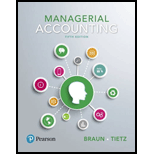
Concept explainers
Ethics and casual conversations (Learning Objective 4)
ETHICS
Jane is an accountant at Merelix, a large international firm where she works on potential acquisitions. When Merelix is preparing to acquire a company, Jane is involved in filing the necessary paperwork with the Securities and Exchange Commission (SEC).
Jane has been dating Tom for two years; they are now discussing marriage. Tom works as a salesperson for a golf equipment distributor.
Over the past two years, Jane has talked with Tom about what she’s doing at work. She does not go into great detail, but does occasionally mention company names. Jane has given her phone passcode to Tom so he can answer calls for her or look things up for her when she’s the one driving. Tom has read some of her emails by using the phone passcode. He has also eavesdropped on a few phone conversations she has had when a colleague calls her from work with a question. Unbeknownst to Jane, Tom has been sharing the information he has gotten from her with his stockbroker friend, Allen. Tom will call Allen to give him a “heads up” that Jane’s company is going to be acquiring another company soon. Allen will then place an order to buy the stock of the company and will later split the profits with Tom.
Jane has not shared any information intentionally, nor has she directly profited from it.
Requirements
Using the IMA Statement of Ethical Professional Practice as an ethical framework, answer the following questions:
- 1. What is (are) the ethical issue(s) in this situation?
- 2. What are Jane’s responsibilities as a
management accountant ? - 3. Has Jane violated any part of the IMA Statement of Ethical Professional Practice? Support your answer.
Want to see the full answer?
Check out a sample textbook solution
Chapter 1 Solutions
Managerial Accounting (5th Edition)





